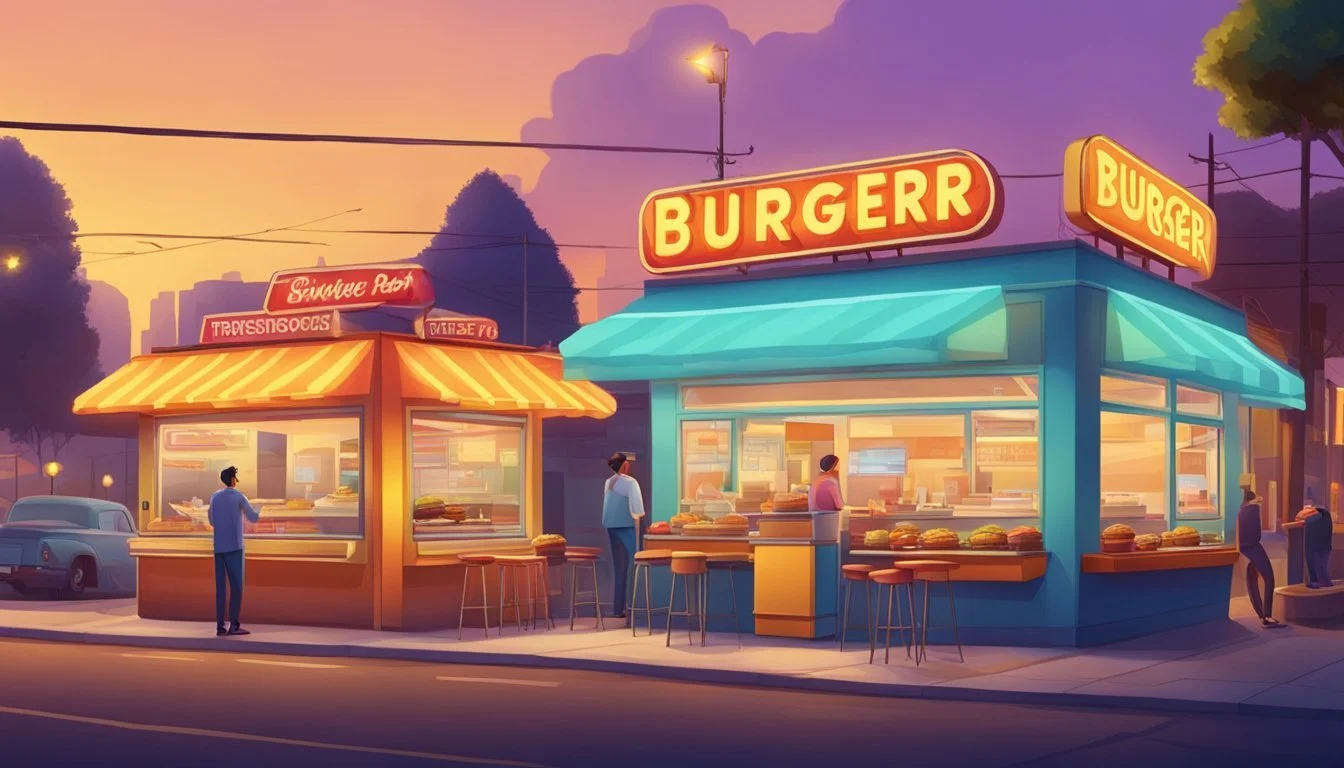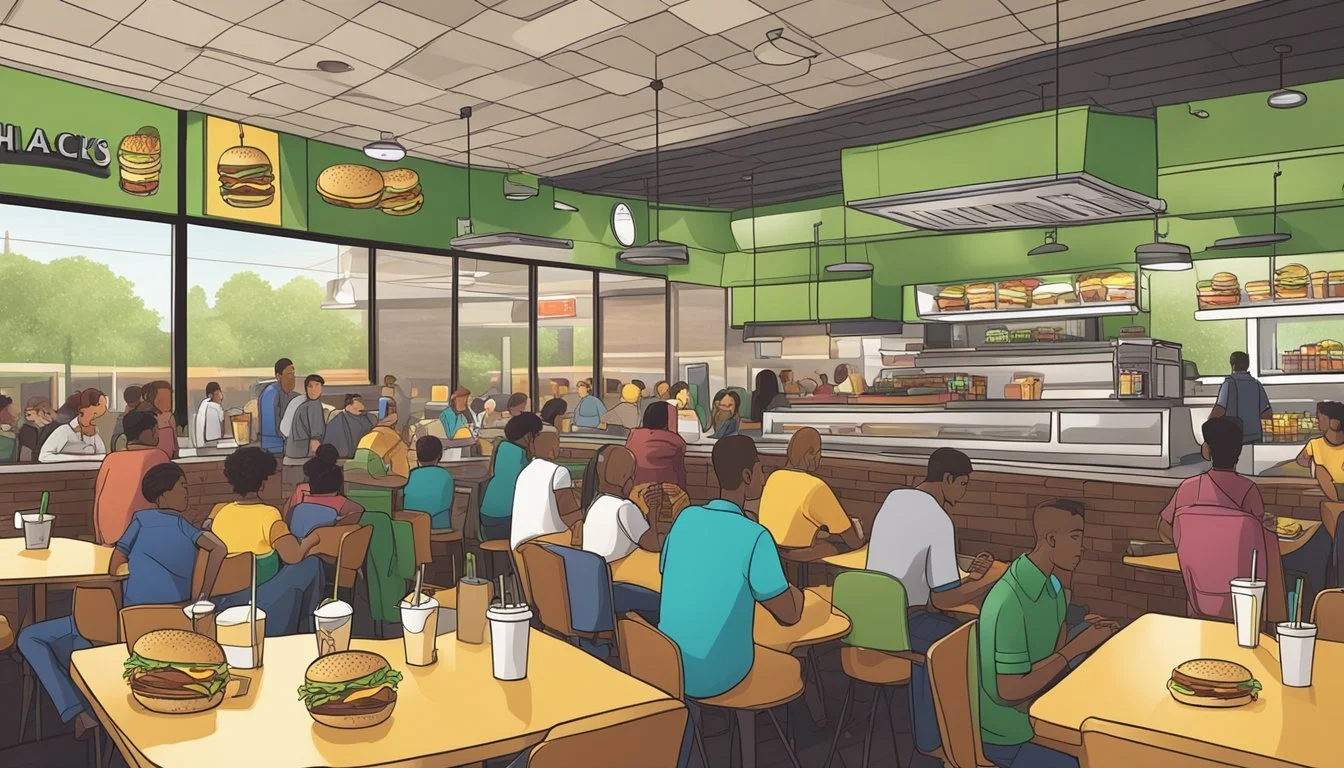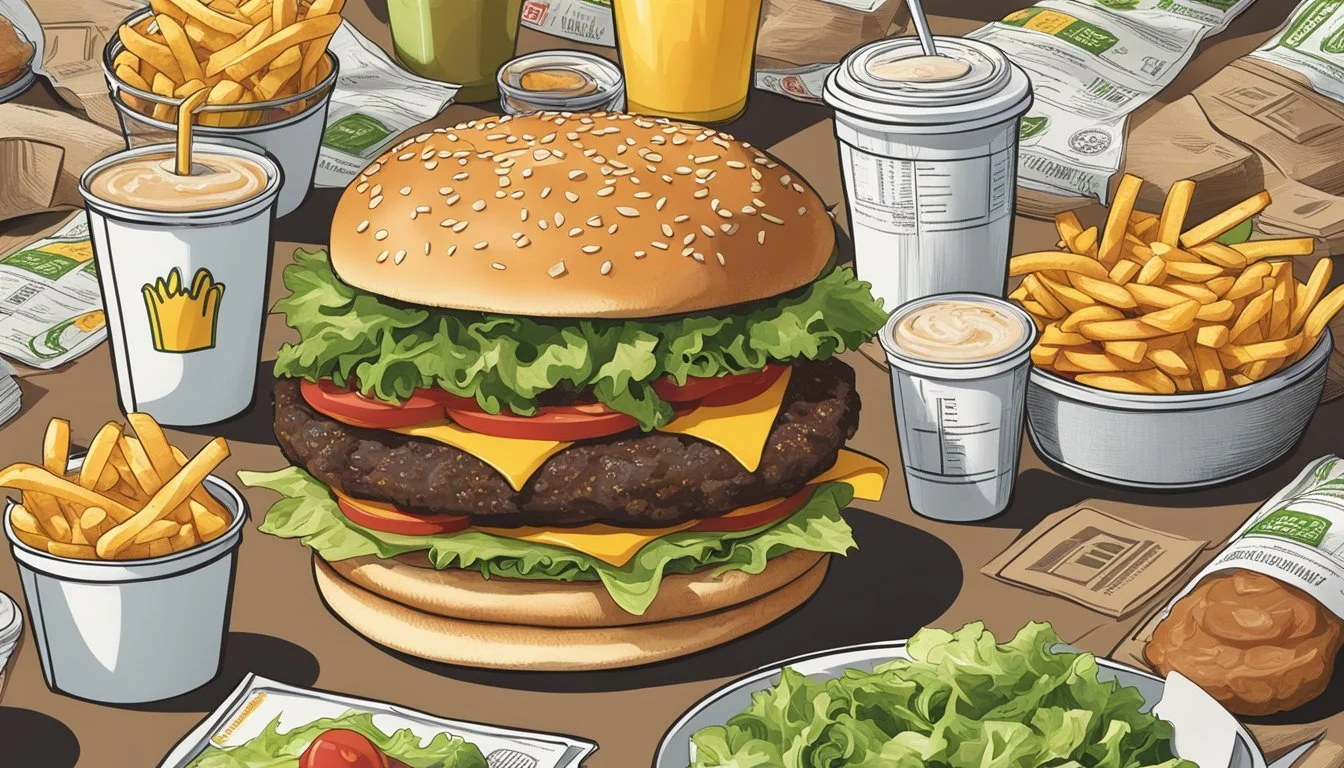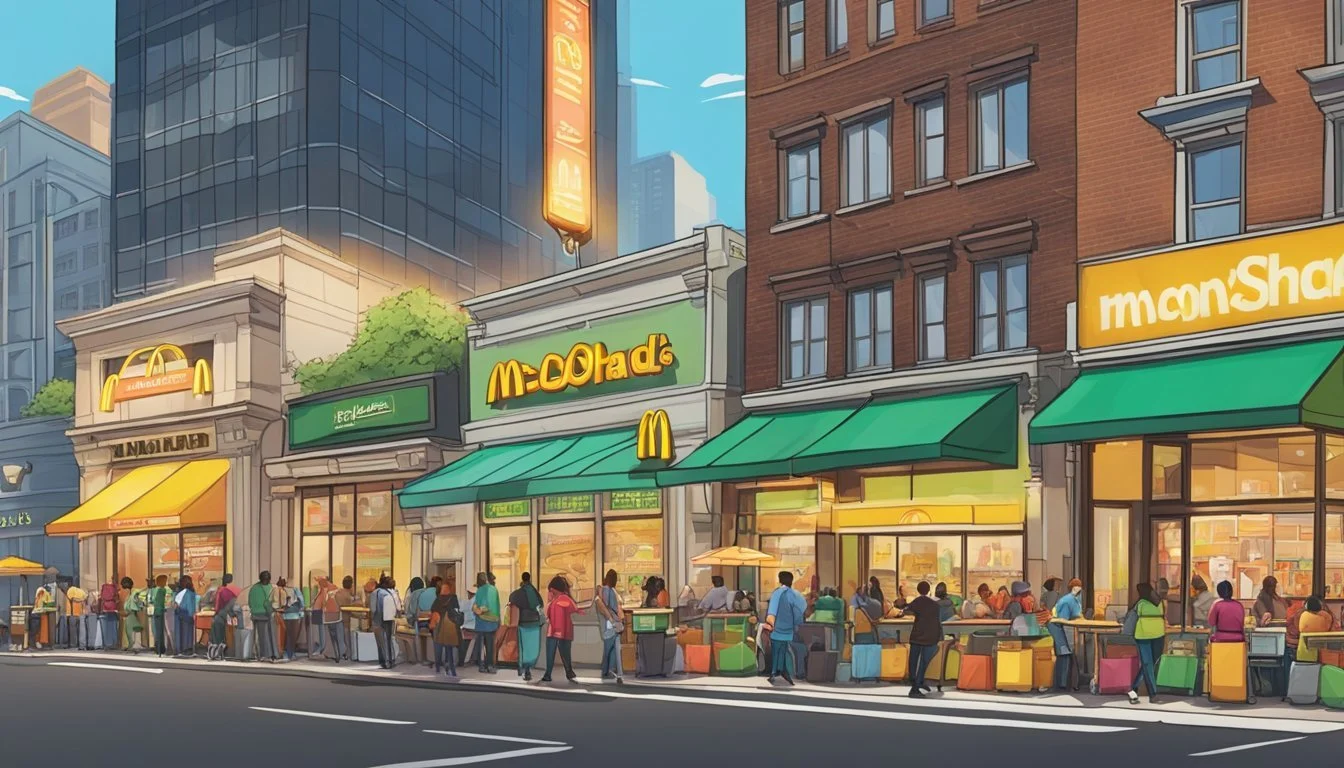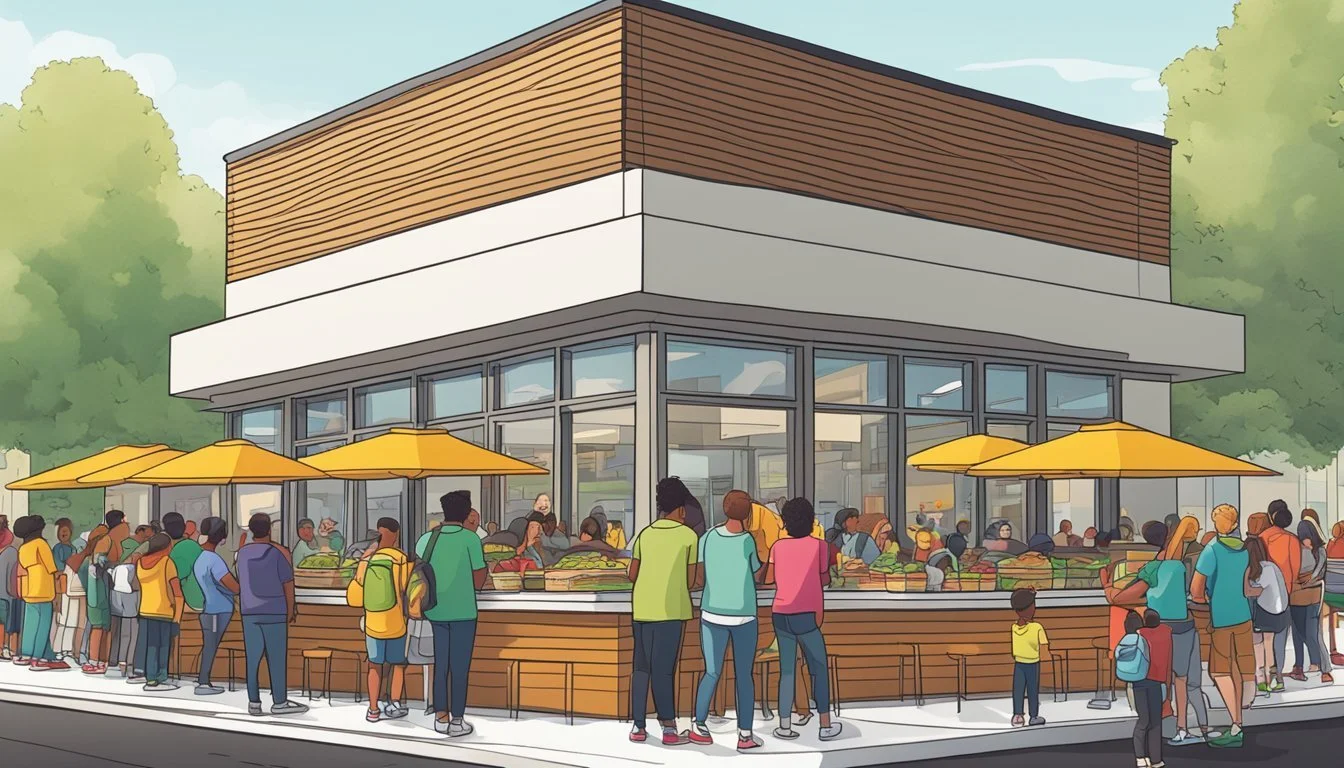McDonald's vs Shake Shack
A Comprehensive Comparison of Burger Powerhouses
In the world of fast-food burgers, the debate between McDonald's and Shake Shack has often polarized fans. McDonald's, with its expansive global reach and recognizable Big Mac, has been a staple in the fast-food industry since 1955. Connoisseurs of a quick, satisfying meal often look to McDonald's for its consistent taste and affordability.
Shake Shack, on the other hand, is a relative newcomer, entering the scene with a hot dog cart in New York's Madison Square Park in 2001 before evolving into a multinational premium burger chain. It has distinguished itself by emphasizing the quality of ingredients, a commitment to customer experience, and an approach that leans more towards the "better burger" movement. This movement is characterized by a focus on gourmet ingredients, eco-friendly practices, and innovative flavors.
These distinct business models and culinary approaches set the stage for an intriguing comparison. Customers are left to weigh the traditional, comforting consistency of McDonald's against Shake Shack's premium offerings and modern ethos. Each chain has not only a loyal customer base but also critics, fostering ongoing discussions about which burger joint ultimately provides a better dining experience.
Historical Overview
In the timeline of fast-food history, two brands have carved out significant niches for themselves: McDonald’s with its unparalleled global presence and Shake Shack, a relative newcomer that leveraged a premium approach to challenge the status quo.
McDonald's Origins
McDonald's began as a single restaurant opened by brothers Richard and Maurice McDonald in San Bernardino, California, in 1940. Initially, they offered a large menu, but by 1948 they streamlined to focus on burgers, milkshakes, and fries. The introduction of the "Speedee Service System" in 1948 revolutionized the fast-food industry, emphasizing efficiency and the standardization of products. Ray Kroc, a milkshake mixer salesman, saw potential in this and obtained the franchising rights in 1955, which led to the rapid expansion of McDonald's as a franchise.
Shake Shack's Beginnings
Shake Shack traces its origins to a hot dog cart in Madison Square Park, New York City, in 2001. This cart was an initiative by Danny Meyer's Union Square Hospitality Group to support the Madison Square Park Conservancy's first art installation. The cart became incredibly popular, and in 2004, Shake Shack was established as a permanent kiosk in the park. It distinguished itself by serving high-quality burgers, hot dogs, and shakes, and it quickly captured the hearts of New Yorkers, setting a precedent for expansion and growing into a multi-national chain.
Menu Offerings Comparison
In comparing Shake Shack and McDonald's, one must consider the differences in their menu offerings, with a focus on the quality of ingredients and variety of options available.
Burgers at the Core
Shake Shack is renowned for its all-natural Angus beef patties, which are free from hormones and antibiotics. Their menu includes a variety of burgers featuring lettuce, tomato, pickle, and their proprietary ShackSauce. A standout option is the ShackBurger, which can come with cheese and bacon, delivering a premium experience with each bite.
McDonald's, on the other hand, has introduced a premium lineup of burgers aimed at competing in the better burger segment. They use fresh beef patties for some select items, distinguishing these offerings from their classic lineup. A burger from McDonald's typically comes with ingredients like ketchup, mustard, onion, and pickles.
Shake Shack
Beef Patties: All-natural Angus beef
Bacon: Available on select burgers
Lettuce: Crisp green lettuce
Cheese: Melted cheese options
Special Sauce: ShackSauce
McDonald's
Beef Patties: Fresh beef options for premium burgers
Bacon: Available on select burgers
Lettuce: Shredded iceberg lettuce
Cheese: Various cheese options
Special Sauce: Big Mac sauce, other select sauces
Beyond Burgers
Both establishments cater to diners seeking alternatives to beef burgers. Shake Shack offers a selection of chicken sandwiches and has incorporated a veggie-heavy 'Shroom Burger that includes a crisp-fried portobello mushroom filled with melted muenster and cheddar cheese.
McDonald's provides a variety of options as well, including fish sandwiches and McChicken sandwiches, diversifying beyond their beef-based fare. They also offer salads and have tested various veggie-heavy ingredients in global markets, though they typically do not keep a dedicated vegetarian burger on their permanent menu in the U.S.
Shake Shack
Chicken: Chicken sandwiches with various toppings
Veggie Burgers: 'Shroom Burger
Other Offerings: Hot dogs, frozen custard
McDonald's
Chicken: McChicken sandwich and other chicken options
Veggie Burgers: Limited-time or test-market veggie options
Other Offerings: Fish sandwiches, salads, various breakfast items
In summary, the burger core of each restaurant has distinctive offerings with respective claims to premium ingredients and signature flavors, while the extension beyond burgers reveals a strategic response to diverse customer preferences.
Quality and Sourcing
The debate between McDonald's and Shake Shack often pivots to the critical aspects of quality and sourcing. Customers are increasingly attentive to the origins of their food, the ingredients used, and the freshness on offer.
Ingredients and Freshness
Shake Shack prides itself on using fresh, high-quality ingredients for its menu items. They are known for their non-GMO potatoes, hormone-free dairy, and antibiotic-free chicken. Shake Shack has consistently emphasized its commitment to fresh produce and high standards for ingredient selection.
McDonald's, on the other hand, has made strides in improving the freshness of its ingredients. The company has started sourcing more locally-grown produce where possible, and in recent years, has made the shift to using fresh beef in its Quarter Pounder burgers in the United States, moving away from frozen patties.
All About the Beef
When it comes to beef, both chains have taken distinct approaches:
Shake Shack: They source 100% Angus beef, renowned for its marbling and flavor. Their beef is antibiotic-free and hormone-free, appealing to consumers who are concerned about the use of additives in food production.
McDonald's: They have also updated their beef sourcing policies. While not all McDonald's beef is Angus, they ensure that their burgers are now made with 100% pure beef patties with no fillers, additives, or preservatives.
By scrutinizing ingredients and sourcing, these brands shape the experience and satisfaction of their clientele, catering to increasing demands for transparency and quality in the fast-food domain.
Signature Items
Evaluating McDonald's and Shake Shack, one must take into account their stand-out items that define their brand—distinctive sauces, toppings, and their unique burger offerings.
Distinctive Sauces and Toppings
McDonald's is known for its range of Signature Crafted options, such as the Pico Guacamole Burger which features a creamy guacamole and a tangy Pico de Gallo. They further personalize their offerings with sauces like a buttermilk ranch or a sweet and tangy barbecue.
On the other hand, Shake Shack has made a name for its ShackSauce, a slightly spicy, sweet and tangy blend that is often slathered on their burgers. The SmokeShack burger, in particular, is adorned with this signature sauce and distinguished by the addition of spicy cherry peppers, giving it a unique flavor profile.
Famous Specialties
Among the specialty items, McDonald's introduced the Garlic White Cheddar Burger, part of the Signature Crafted line, which appealed to those preferring a robust flavor combination with a hint of garlic and the sharpness of cheddar.
Shake Shack's menu shines with exclusive items such as their take on a cheeseburger, featuring all-natural Angus beef and their proprietary ShackSauce. The restaurant keeps its menu fresh and regional by occasionally offering localized specialties, which often become fan favorites due to their exclusivity and novel taste combinations.
Both establishments have created a loyal following by offering these signature items, each bringing something distinctive to the burger joint showdown.
Culinary Experience
The culinary experience at both McDonald's and Shake Shack hinges heavily on the unique taste and flavor profiles of their offerings, as well as the thoughtful presentation and packaging that appeals to their respective audiences.
Taste and Flavor Profiles
McDonald's boasts a long-standing reputation for providing consistent taste across its global locations. Their burgers, often characterized by a familiar savoriness, cater to those seeking the classic fast-food experience. McDonald's uses a standard grill for its cooking process, which imparts a distinctive charred flavor to the patties.
In terms of ingredients, McDonald's offers fresh toppings like tomato and pickle, which add a crisp texture and tangy notes to the burger. Their buns are a simple vehicle that holds together the patty and toppings without overpowering the flavors of the meat and condiments.
Conversely, Shake Shack is renowned for its premium ingredients that elevate its burger offerings. They utilize a potato bun, which is often praised for its soft texture and slight sweetness, complementing the savory blend of the beef. Their patties are a culmination of high-quality beef, which is gently pressed on the grill to retain juiciness and develop a rich crust.
Each burger at Shake Shack is crafted to provide a balance among premium toppings, which include fresh lettuce, tomato, and their iconic ShackSauce. The combination of these ingredients results in a complex flavor profile that stands out in the "better burger" market.
Presentation and Packaging
Packaging at McDonald's is immediately recognizable with its branded boxes and wrappers, which provide convenience and maintain product integrity. The fast-food giant emphasizes a quick serve format, and their straightforward presentation reflects this efficiency.
Shake Shack, while also fast-casual, appears to invest more in the aesthetic appeal of their food presentation. Serving their burgers and fries in minimalist yet stylish containers, they communicate a more premium and contemporary image. This attention to detail extends to their dine-in experience; their presentation on the tray often provides a more restaurant-like feel than traditional fast food.
Nutritional Value
When evaluating the nutritional value of burger joints like McDonald's and Shake Shack, it is essential to consider the caloric content, the quality of ingredients, and the overall healthiness of the meals offered.
Shake Shack promotes a diverse menu with options that can cater to those seeking less calorically dense meals. Their Veggie Shack, for example, when ordered vegan and lettuce-wrapped, contains 310 calories. In comparison, Shake Shack's Black Truffle Burger contains 710 calories for a single patty, escalating to 980 calories if doubled.
McDonald's, on the other hand, has introduced premium burgers in its menu. The exact caloric content of these burgers varies, but generally, McDonald's offerings can be considered heavy meals, with a single premium burger often containing around 600 calories or more. It's significant to acknowledge that while both establishments offer all-natural options, these claims mainly cater to marketing and are subject to interpretation.
Below is a quick comparison of nutritional facts:
Shake Shack
Black Truffle Burger:
Calories: 710
Fat: 48 g
Saturated Fat: 15 g
Sodium: 1320 mg
Veggie Shack (Vegan, lettuce-wrapped):
Calories: 310
Fat: 18 g
Saturated Fat: 1.5 g
Sodium: 900 mg
McDonald's
Premium Burger (Estimate):
Calories: 600+
Fat: Varies
Saturated Fat: Varies
Sodium: Varies
One should also consider the ingredients used. While both chains have committed to using better quality, all-natural ingredients, the impact on the nutritional value is still subject to the choice of menu items.
It's clear that both McDonald's and Shake Shack offer a range of options for those mindful of nutritional value. Diners have the ability to choose lighter meals or indulge in heavier, more calorie-rich burgers.
Brand Perception and Expansion
In the competitive landscape of global burger chains, McDonald's and Shake Shack stand out for their distinct strategies in brand perception and international expansion. Their approaches affect consumer value, industry impact, and perceptions of quality in the "better burger" category.
Global Reach and Influence
McDonald's has an extensive global presence, operating in over 100 countries with more than 38,000 locations. This expansive network underscores its influence and the success of its franchise model. It's known for providing consistent value offerings on a large scale.
Countries: Over 100
Total Locations: 38,000+
In contrast, Shake Shack is significantly smaller with its presence but is in growth mode. Primarily concentrated in the United States, the company has started to broaden its international footprint, targeting premium market segments.
Countries: Expanding globally
Total Locations: Increasing focus on international markets
Public Image
McDonald's public image has been shaped by decades of memorable marketing and widespread franchise recognition. It is often associated with family-friendly values and quick service. However, the brand has faced challenges in shifting consumer tastes towards premium offerings.
Marketing: Strong, family-oriented
Perception: Fast service, value-focused
Challenges: Adapting to premium preferences
Shake Shack enjoys a perception as a modern and premium "better burger" experience. It invests in quality ingredients and customer services, aiming to create spaces for social gatherings. Despite its higher prices, its commitment to quality has fostered a positive image among its target demographic.
Perception: Modern, premium
Quality Focused: Yes
Price Point: Higher than traditional fast food
While McDonald's adapts to align with the premium burger trend, with brands like Five Guys and Burger King also evolving, Shake Shack's focus remains on reinforcing its premium brand status within the burger industry.
Business Strategy and Performance
The competitive landscape between McDonald's and Shake Shack presents distinct differences in their business strategies and performance metrics. McDonald's benefits from a vast franchise network, while Shake Shack is known for measured growth and quality focus.
Financial Metrics
Sales Numbers: McDonald's continuously reports strong sales across its global outlets. Revenue growth has been consistent, with a 176% increase over a defined period, indicating robust performance.
Profit Margin: The profit margins for McDonald's are traditionally high due to the scale of its operations and cost-efficient business model, resulting in substantial returns for its shareholders.
Franchise Model
Business Model: McDonald’s utilizes a franchise model which significantly contributes to its global presence. The franchise approach allows for rapid expansion with less capital expenditure for the corporation itself.
Franchise Fees: Franchisees pay initial fees and ongoing royalties, which become a consistent revenue stream for McDonald’s, bolstering the financial standing for both franchisor and franchisee.
Valuation and Investors: The large number of franchises and their associated fees enhance McDonald's valuation, making it an attractive investment. Conversely, Shake Shack’s corporate-owned business model appeals to investors looking for direct control over operations and brand consistency.
By analyzing their business strategies and performance, investors can determine which burger joint aligns with their financial goals, whether it be the dependable returns from McDonald’s franchises or the potential growth trajectory of Shake Shack’s corporate model.
Customer Experience
When comparing McDonald's and Shake Shack, service efficiency and ambiance are two critical aspects that shape customer experience at these popular burger joints.
Service Speed and Convenience
McDonald's is renowned for its fast service, with a business model focused on quick delivery. Customers can expect to receive their orders within minutes, making it a convenient option for those on the go. The franchise's global presence, with drive-thru services, further enhances its accessibility, ensuring that McDonald's is often the go-to for efficiency and convenience.
Drive-thru times: Under 5 minutes
Locations: Over 38,000 worldwide
Mobile ordering: Available in many markets
In contrast, Shake Shack has positioned itself as a premium brand, which usually means a slight increase in wait times due to the preparation of fresher, high-quality ingredients. While this impacts speed, customers typically accept the trade-off for a better food experience. Shake Shack's expansion is ongoing, but they do not match McDonald's sheer number of locations.
Average wait time: Varies, often longer than McDonald's
Locations: 100+ internationally
Mobile ordering: Available but less prevalent
Environment and Ambience
Shake Shack takes pride in creating a modern and welcoming environment for customers to dine in. Their emphasis on comfort and social space is evident in their restaurant design, which often features contemporary décor and community tables.
Atmosphere: Trendy, communal, and often urban
Seating: Community-focused, outdoor options available
Meanwhile, McDonald's has made strides to revamp its interiors, moving towards a more contemporary and comfortable setting in many of its locations. The new "Experience of the Future" restaurants feature self-service kiosks and more inviting seating arrangements.
Atmosphere: Casual, family-friendly
Modernization efforts: Self-service kiosks, updated interiors
Innovation and Trends
In the fast-paced world of fast food, staying ahead requires constant innovation and keen adaptation to emerging trends. McDonald's and Shake Shack have both made significant strides in responding to market shifts and integrating technology into their operations.
Adapting to Market Changes
McDonald's, with its well-established franchise model, has demonstrated agility in adapting to market changes. During COVID-19, they swiftly implemented safety measures and adjusted their menu to meet changing consumer preferences, often focusing on popular and easily-managed items. Shake Shack, known for its premium positioning, also pivoted during the pandemic by enhancing take-out options to cater to customers looking for high-quality meals to enjoy at home.
Embracing Technological Advancements
McDonald's has been at the forefront of embracing technological advancements. Their investment in AI, particularly at the drive-thru, is aimed at streamlining the ordering process and improving customer experience. Digital kiosks and mobile ordering options are part of their commitment to utilizing modern technology to maintain their market position.
Digital Initiatives:
AI-driven drive-thru menus
Mobile app ordering
Self-service kiosks
Shake Shack, while smaller in scale, has not lagged in tech adoption. They have also introduced mobile ordering platforms and have been experimenting with delivery-only locations, acknowledging the necessity of a strong digital presence in the current burger joint landscape.
Customer Engagement:
Mobile ordering and payment solutions
Exploration of delivery-focused models
Consumer Preferences
When considering McDonald's and Shake Shack, consumer preferences play a pivotal role in determining which burger joint may be considered 'better.' These preferences are influenced by a range of factors, including taste, value for money, and brand perception.
Taste: McDonald's has a broad appeal with its familiar flavors and consistent quality across locations. Shake Shack, on the other hand, has positioned itself as a premium brand, focusing on high-quality ingredients and richer taste profiles.
Price Point: Cost is a significant factor for consumers. McDonald's boasts a competitively priced menu with most burgers around $6. In contrast, Shake Shack's offerings can range from $6 to $8, which can influence the decision-making of budget-conscious customers.
Brand Perception: McDonald's is recognized for its fast service and convenience, which appeals to those seeking quick and reliable options. Shake Shack is often associated with a more upscale dining experience, emphasizing customer expectations and social dining environments.
Personal Preference: No single winner can be declared as preferences are subjective. Some patrons may favor McDonald's for its accessibility and value, while others might prefer Shake Shack for its emphasis on premium ingredients and flavor.
In essence, the 'better' option is dictated by individual consumer priorities—whether they weigh taste, price, or brand experience more heavily in their choice.
Conclusion
When comparing McDonald's to Shake Shack, consumers should consider several factors:
Brand Philosophy: McDonald's emphasizes value and convenience, with a widespread global presence that facilitates quick access to its products. Shake Shack, on the other hand, focuses on a premium experience and quality ingredients, aiming to offer a more upscale experience.
Menu Offerings: Both brands offer unique takes on the classic burger:
McDonald's provides a variety of options with a focus on affordability.
Shake Shack offers artisanal-style burgers that cater to higher-end tastes.
Financial Accessibility:
McDonald's typically ranks lower in price, making it accessible to a broader audience.
Shake Shack is generally more expensive, reflecting its higher-end market position.
When it comes to choosing the better burger joint, it boils down to personal preference. If customers value quick service and a familiar menu at a lower cost, McDonald's may be the preferred choice. For those who prioritize burger quality, ingredient sourcing, and don't mind spending more, Shake Shack could be the better option. It is not a question of which one is objectively better, but rather which one aligns more closely with individual preferences and expectations.

